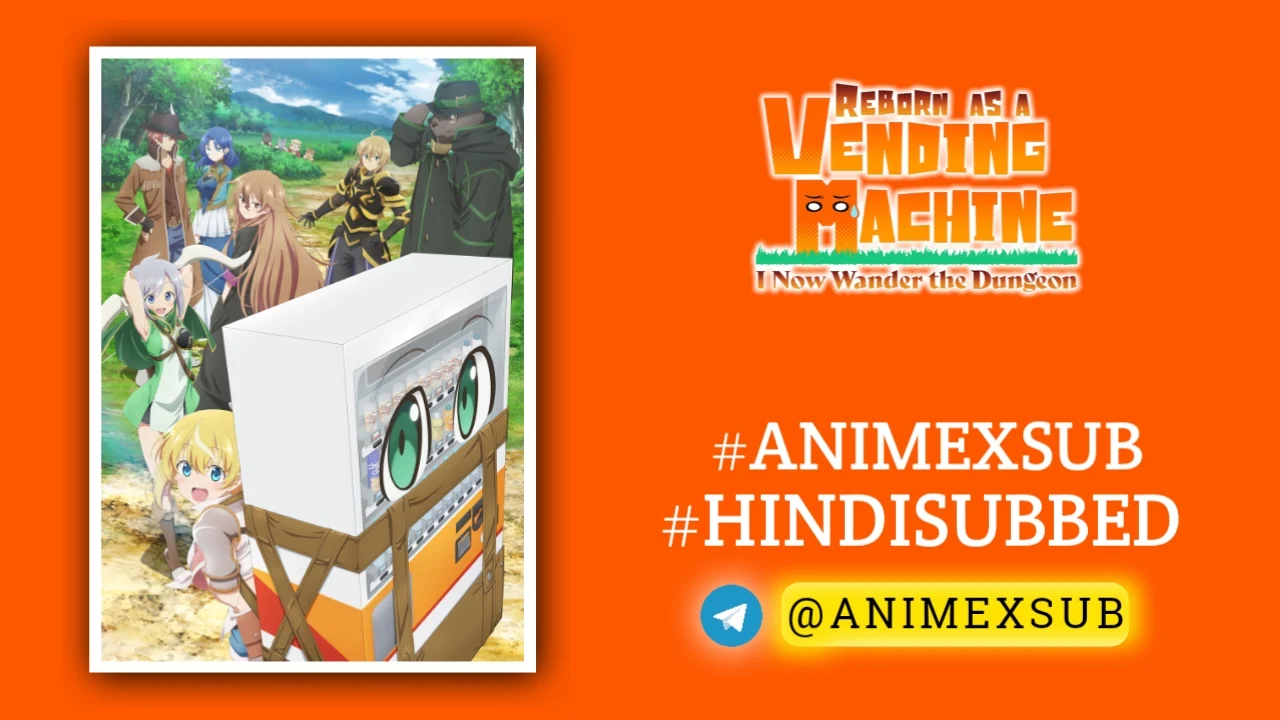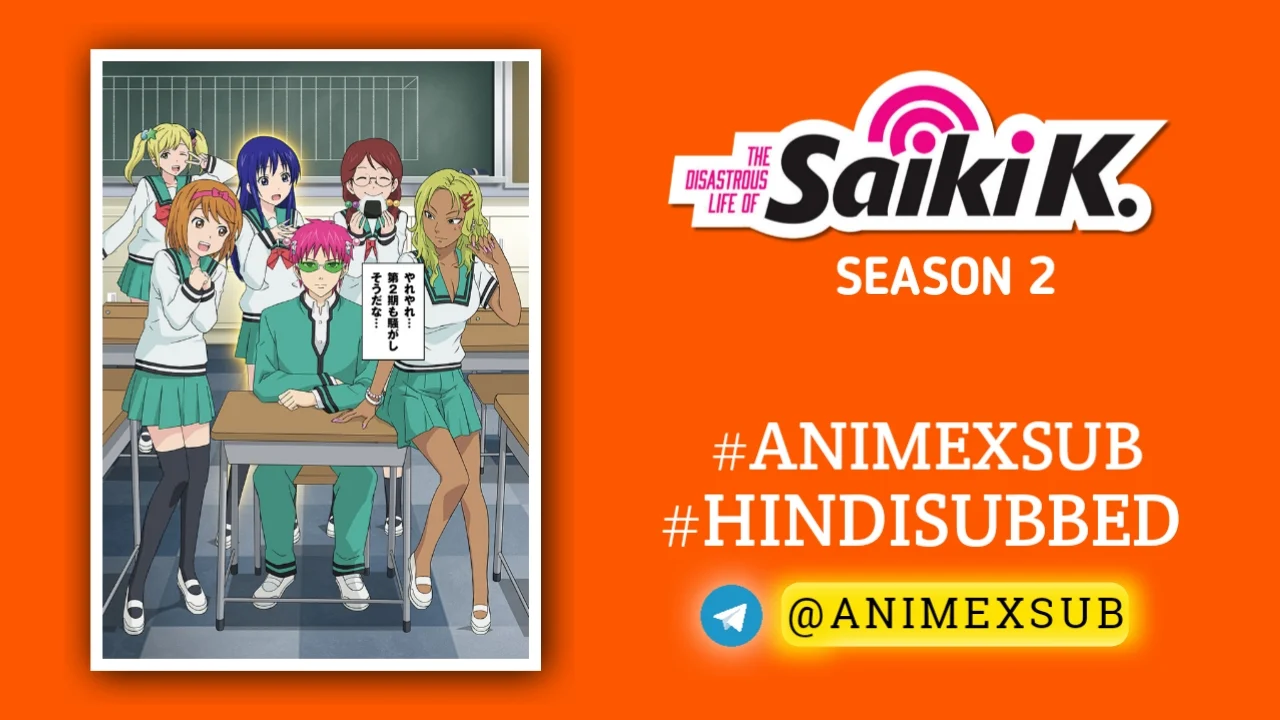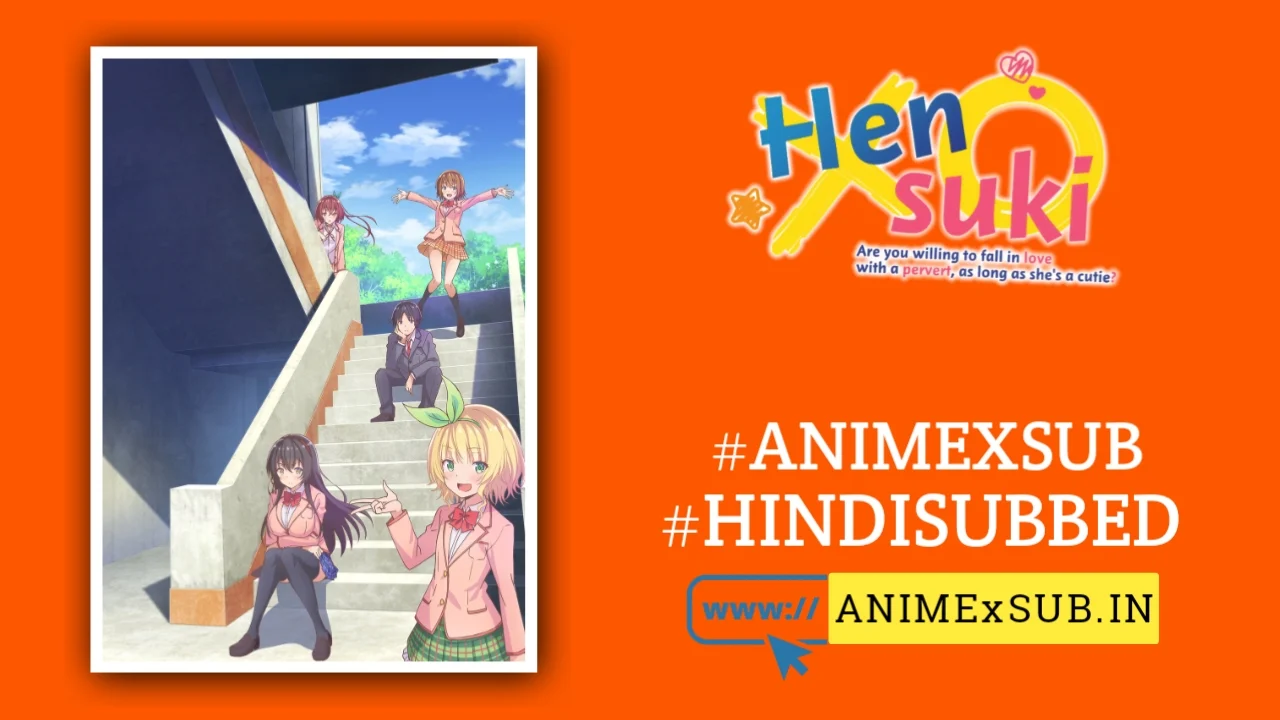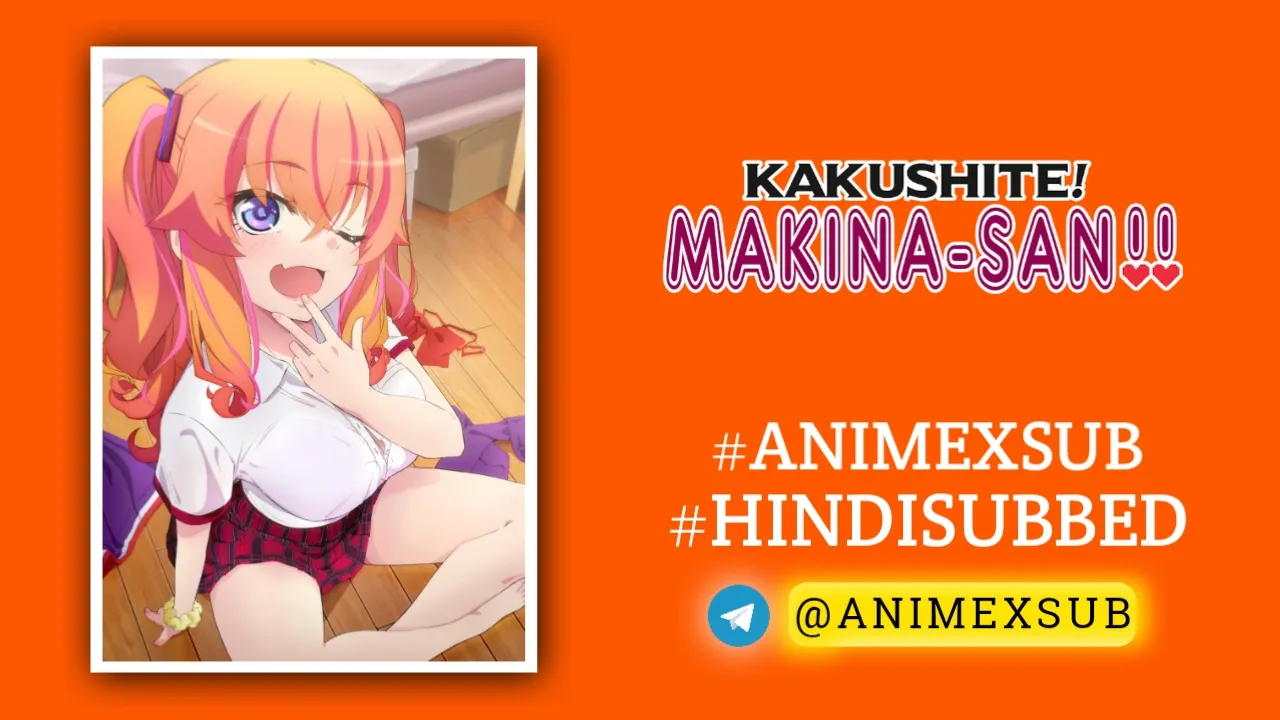
See You Tomorrow at the Food Court Hindi Subbed [06/06] | Food Court de, Mata Ashita. Hindi Sub!!

Food Court de, Mata Ashita.
See You Tomorrow at the Food CourtSynopsis
Meet Wada, who gives off an unapproachable vibe, and Yamamoto, who strikes fear into those around her because of her looks. Though the two girls attend separate high schools, they meet up at a shopping center’s food court almost every day. Take a little peek at the laid-back afternoons Wada and Yamamoto share as they reflect on the ups and downs of high school life together. (Source: Crunchyroll)
Watch Trailer
Characters
See You Tomorrow at the Food Court Season 1: A Slice-of-Life Masterpiece Redefining the Mundane
See You Tomorrow at the Food Court (Food Court de, Mata Ashita), a six-episode anime adaptation of Shinichirō Nariie’s web manga, premiered on July 7, 2025, as part of the Summer 2025 anime season. This understated yet profoundly resonant series has quietly carved out a niche as one of the most authentic and refreshing slice-of-life anime in recent memory. Far from relying on exaggerated tropes or melodramatic arcs, the show finds its strength in the quiet, unfiltered moments of teenage life, offering a raw and nuanced exploration of friendship, identity, and the beauty of the everyday. This article delves into what makes See You Tomorrow at the Food Court Season 1 a next-level achievement in anime storytelling, avoiding promotional fluff and focusing on its unique narrative, character depth, and cultural significance.
The Premise: Ordinary Moments, Extraordinary Depth
At its core, See You Tomorrow at the Food Court follows two high school girls, Wada and Yamamoto, who meet daily at a mall food court to share conversations that range from the absurd to the deeply personal. Wada, outwardly a reserved honor student, is a mobile game addict with a sharp tongue and a penchant for judging others. Yamamoto, a blonde gyaru with an intimidating aura, is introspective, multilingual, and fascinated by urban legends and YouTube. Their unlikely friendship, built on candid exchanges over fast food, forms the heart of the series.
What sets this anime apart is its refusal to lean on conventional anime plot devices. There are no fantastical battles, no forced romantic subplots, and no over-the-top comedic gags. Instead, the show embraces the mundane—discussions about gacha games, social media, spicy noodles, and even toilet paper brands—while revealing the complexities of its characters through their dialogue and interactions. The food court, a liminal space of fluorescent lights and chain restaurants, becomes a sanctuary where Wada and Yamamoto shed their public personas and reveal their true selves. This premise, though simple, is executed with such authenticity that it feels revolutionary in a genre often dominated by heightened drama.
Character Dynamics: A Study in Contrasts and Connection
The strength of See You Tomorrow at the Food Court lies in its two protagonists, whose contrasting personalities create a dynamic that is both relatable and profoundly human. Wada’s impulsive, judgmental nature—she trashes a classmate’s appearance or gets emotionally invested in a 2D gacha character—clashes with Yamamoto’s grounded, empathetic perspective. Yamamoto’s ability to challenge Wada’s biases, like when she defends a classmate’s quirky habits or encourages Wada to reconsider her prejudices, adds depth to their friendship. This dynamic isn’t just a comedic back-and-forth; it’s a subtle exploration of how friendships can shape personal growth.
The series excels at showing how Wada and Yamamoto complement each other. Wada’s chaotic energy is tempered by Yamamoto’s calm reasoning, while Yamamoto’s introspective tendencies are enlivened by Wada’s unpredictability. Moments like Yamamoto reducing her work shifts to spend more time with Wada or Wada’s gradual realization of her affection for her friend hint at a bond that transcends casual hangouts. The show doesn’t force a romantic interpretation but leaves room for viewers to ponder the nature of their closeness, making their relationship feel organic and open-ended.
The voice acting enhances this dynamic. Hiyori Miyazaki’s portrayal of Wada captures her fiery passion and vulnerability, while Yoshino Aoyama’s Yamamoto balances cool confidence with warmth. Their chemistry makes even the most mundane conversations—like debating the merits of crane games or spicy udon—feel like a window into their souls.
Narrative Structure: Less Is More
With only six 23-minute episodes, See You Tomorrow at the Food Court faces the challenge of telling a complete story in a short runtime. Some viewers, as noted in online discussions, argue that 12 shorter episodes might have suited the conversational premise better, preventing the format from feeling repetitive. However, the series uses its limited episodes to its advantage, crafting tightly focused narratives that prioritize character over plot.
Each episode is structured around a series of vignettes—conversations that jump from topic to topic, mirroring the scattered yet intimate nature of real teenage banter. Topics range from the hilarious (Wada’s meltdown over a rigged claw machine) to the philosophical (Yamamoto’s musings on aliens and the universe). These segments are interspersed with subtle visual cues, like the changing food court backdrop or the girls’ expressive reactions, which add layers to their dialogue without overwhelming the viewer.
The show’s pacing is deliberately slow, allowing moments of silence or lingering shots to emphasize the comfort of routine. This approach might alienate viewers seeking action or high stakes, as one forum post described it as “the most boring commercial for food court food”. Yet, for those who connect with its vibe, the pacing creates a meditative quality, making the food court feel like a safe haven where time slows down. The series’ ability to find meaning in the mundane—without resorting to contrived conflicts—sets it apart from other slice-of-life anime that often rely on external events to drive the narrative.
Visual and Sound Design: Subtle Brilliance
Produced by Atelier Pontdarc, known for titles like Isekai Ojii-san, the animation of See You Tomorrow at the Food Court is understated but effective. The character designs, with their exaggerated ears and distinct styles—Wada’s neat ponytail versus Yamamoto’s bold gyaru aesthetic—reflect their personalities while grounding them in a relatable high school setting. The food court itself is rendered with meticulous detail, from the KFC and Baskin Robbins logos (noted by fans as possible sponsors) to the cluttered tables and fluorescent lighting that evoke a universal sense of place.
The opening theme, with its infectiously cute dance sequence, has been widely praised as a highlight, with fans calling it “the cutest thing this season”. The soundtrack, composed with minimalistic acoustic tones, complements the show’s relaxed tone, while the sound design—slurps of soda, the clatter of trays—immerses viewers in the food court atmosphere. These elements work together to create a sensory experience that feels lived-in and authentic.
Cultural and Social Commentary
Beyond its surface-level charm, See You Tomorrow at the Food Court offers subtle commentary on teenage life and societal expectations. Wada and Yamamoto’s friendship challenges stereotypes: the “perfect” honor student is a trash-talking gamer, while the “intimidating” gyaru is a thoughtful linguist. This subversion of archetypes critiques how appearances shape perceptions, a theme reinforced when Yamamoto encourages Wada to look beyond snap judgments.
The series also captures the liminality of adolescence, where the food court serves as a neutral ground between school and home, a place where teens can explore their identities without judgment. This resonates with the manga’s origins as a Twitter/X webcomic, where short, relatable snippets mirrored the fleeting yet meaningful interactions of youth. The anime’s honest portrayal of teenage loneliness and the solace of friendship has struck a chord with viewers, with one review noting its “nuance of female friendship” as a standout.
Additionally, the show’s setting in a Japanese mall food court, with its mix of global chains and local flavors, reflects a blend of cultural influences. Yamamoto’s fascination with English and American culture, paired with Wada’s obsession with a Japanese otome game, highlights the globalized world today’s teens navigate. These details ground the series in a specific cultural context while making it universally relatable.
Reception and Impact
See You Tomorrow at the Food Court has garnered a polarized but passionate response. Fans on platforms like MyAnimeList and X praise its cozy, relatable vibe, with one X user calling it a “top 1 slice-of-life” and a “perfection”. Others, however, find its simplicity underwhelming, with some wishing for shorter episodes to maintain momentum. The community score on Anime News Network reflects this divide, with Episode 1 rated at 3.9 and Episode 2 at 4.1, suggesting growing appreciation as the series progresses.
Critics have lauded its character-driven storytelling and understated humor. Anime News Network’s Christopher Farris highlighted the evolving dynamic between Wada and Yamamoto, noting how their friendship feels “real and natural”. Anime Feminist praised the show’s subversion of stereotypes, emphasizing how Wada and Yamamoto’s hidden depths challenge assumptions. The manga’s availability in English has also drawn new fans to the source material, with one YouTube reviewer expressing excitement over its accessibility.
Why It’s Next-Level
What makes See You Tomorrow at the Food Court Season 1 a next-level achievement is its courage to embrace the ordinary without apology. In an anime landscape filled with high-stakes adventures and emotional climaxes, this series dares to celebrate the small moments—conversations over fries, frustrations with a claw machine, or the quiet joy of being understood. It’s a reminder that life’s most profound connections often happen in the most unremarkable places.
The show’s commitment to authenticity, from its dialogue to its character growth, sets a new standard for slice-of-life anime. It doesn’t just depict friendship; it dissects its nuances, showing how two people can grow closer through shared quirks and vulnerabilities. By focusing on Wada and Yamamoto’s evolving bond, the series captures the fleeting beauty of youth with a sincerity that feels both timeless and deeply modern.
Final Thoughts
See You Tomorrow at the Food Court Season 1 is a love letter to the everyday, a six-episode journey that transforms a mall food court into a stage for introspection and connection. Its minimalist approach, rich character dynamics, and subtle cultural insights make it a standout in the slice-of-life genre. While not every viewer will connect with its slow pace or lack of traditional plot, those who do will find a series that resonates long after the final episode. As Wada and Yamamoto part ways each day with a promise to meet again, the show leaves viewers with a similar hope: that the small, messy moments of life are worth cherishing.










